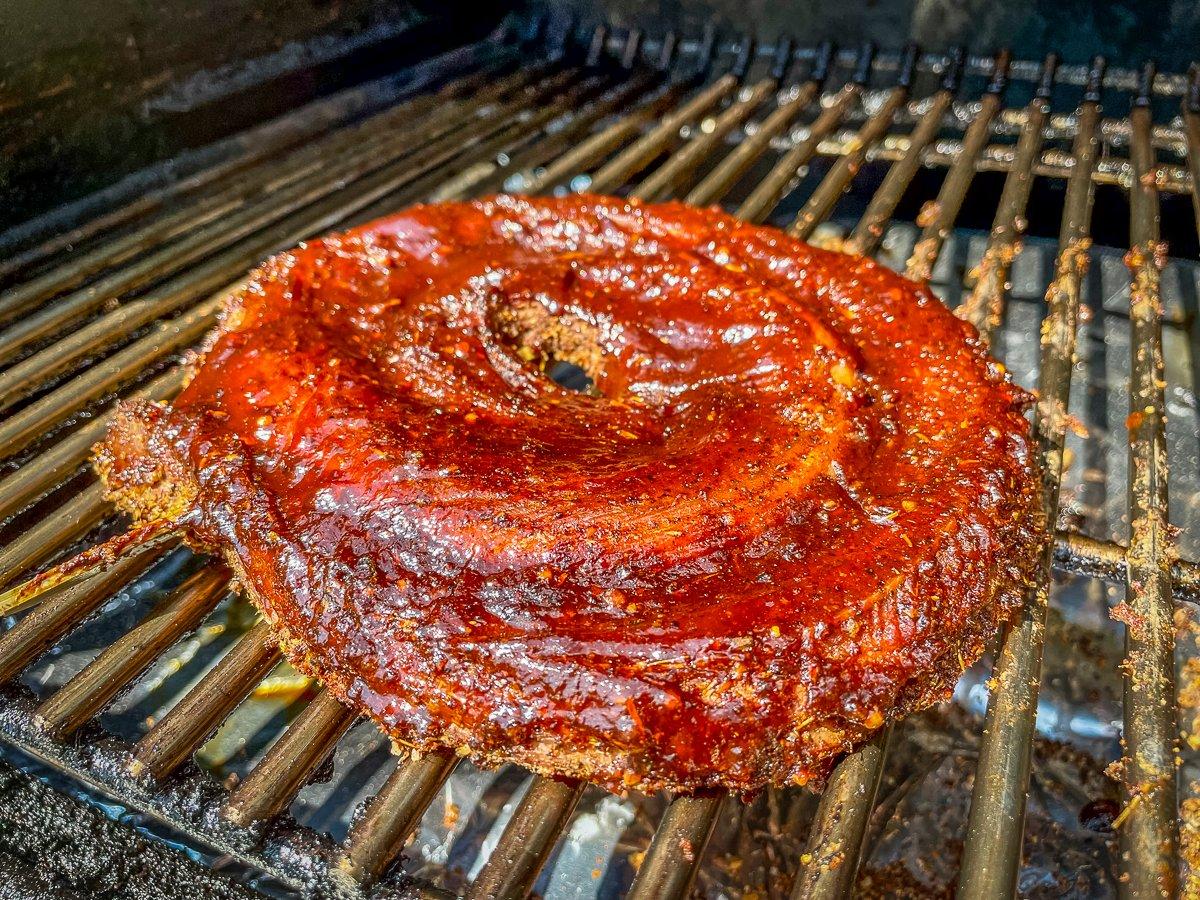My thoughts on venomous snakes are well known among my hunting buddies. I think they have just as much right to be in the woods as I do. As a rule, I leave them alone and let them go about their snake lives while I go about mine. Growing up in an area with more than a few rattlesnakes and as dense a population of copperheads as anywhere I have ever traveled, I learned to watch for them at an early age.
That said, I’m a realist, and I know a lot of people don’t want them around their property, especially if children, livestock, or pets are in the area. So, any time I find out someone might be prone to killing a rattlesnake around their property, I always ask them to put them on ice and give me a call. Why, you might ask? Because rattlesnakes are delicious.
We’ve talked about frying them before here. But they are pretty good slow-smoked on the Traeger grill as well.
(Don’t miss: Deep-Fried Spicy Rattlesnake Recipe)
We’ve also talked about safety. Most people who get bitten by a venomous snake do so because they are messing with it. Don’t do that. Also, freshly killed rattlesnakes can still bite and can still inject venom. If you do kill one, use an ax, a shovel, or a machete to remove the head from a safe distance if the snake is freshly dead. If the snake has been frozen or on ice for a while, you are a little safer, but I still don’t like handling the business end of one. I don’t like to leave the heads where curious children or my dogs can pick it up, so I usually lop it off with a shovel, then dig a hole and use that same shovel to pick up the head and drop it into the hole and bury it.
If you’ve never skinned a rattlesnake, you can see the steps involved here. Once you get the snake skinned, vacuum seal and freeze it for storage, or go ahead and cook it right away. Rattlesnakes have a pretty short shelf life, even refrigerated.
(Don’t miss: How to Skin and Prepare a Rattlesnake for the Table)
Another concern with snakes is that they often carry salmonella. I wear disposable gloves while cleaning the snake, wash knives and cutting boards well with hot, soapy water afterward, and always cook to at least 160 degrees Fahrenheit internal temperature.
As far as the actual process of barbecuing a snake goes, there isn’t much to it. Skin the snake, remove the entrails, and rinse it well. Coat all surfaces of the snake well with your favorite BBQ rub. I used a combination of Traeger Big Game Rub and Traeger Fin & Feather.
Since snakes are shaped like, well, snakes, they can dry out pretty quickly at longer cooking times. To help combat this, I like to roll the snake up in concentric circles, and pin it together with a wooden skewer. Start from the tail section and roll the snake around itself, ending with head end on the outside. Run a wooden skewer in from the side to pin the rings together.
Move the rolled snake to a preheated Traeger grill with the temperature set at 225 degrees. Turn the SuperSmoke function on for more smoky flavor. About an hour into the cook, brush the snake with your favorite BBQ sauce. I used Traeger Texas Spicy for this one because it seemed like a perfect fit. Repeat the sauce every 15 minutes for the remainder of the cook.
Smoke the snake for 2 to 3 hours, or until a meat thermometer inserted into the thickest part of the meat reads 160 degrees. Rest the snake, loosely tented with foil, for 10 minutes or so before serving.
To serve, remove the wooden skewer and cut the snake into individual 4- to 5-inch sections, or just serve the snake on a cutting board or platter and let your guests pick the meat from the bones. Most of the meat will lie along the backbone, kind of a backstrap, so to speak, but you can also get meat from around the rib bones and along the belly.
We like to serve it with a cold beer for an appetizer.
(Hunt in any weather: Men’s Insulated Max-5 Waterproof Parka)












































